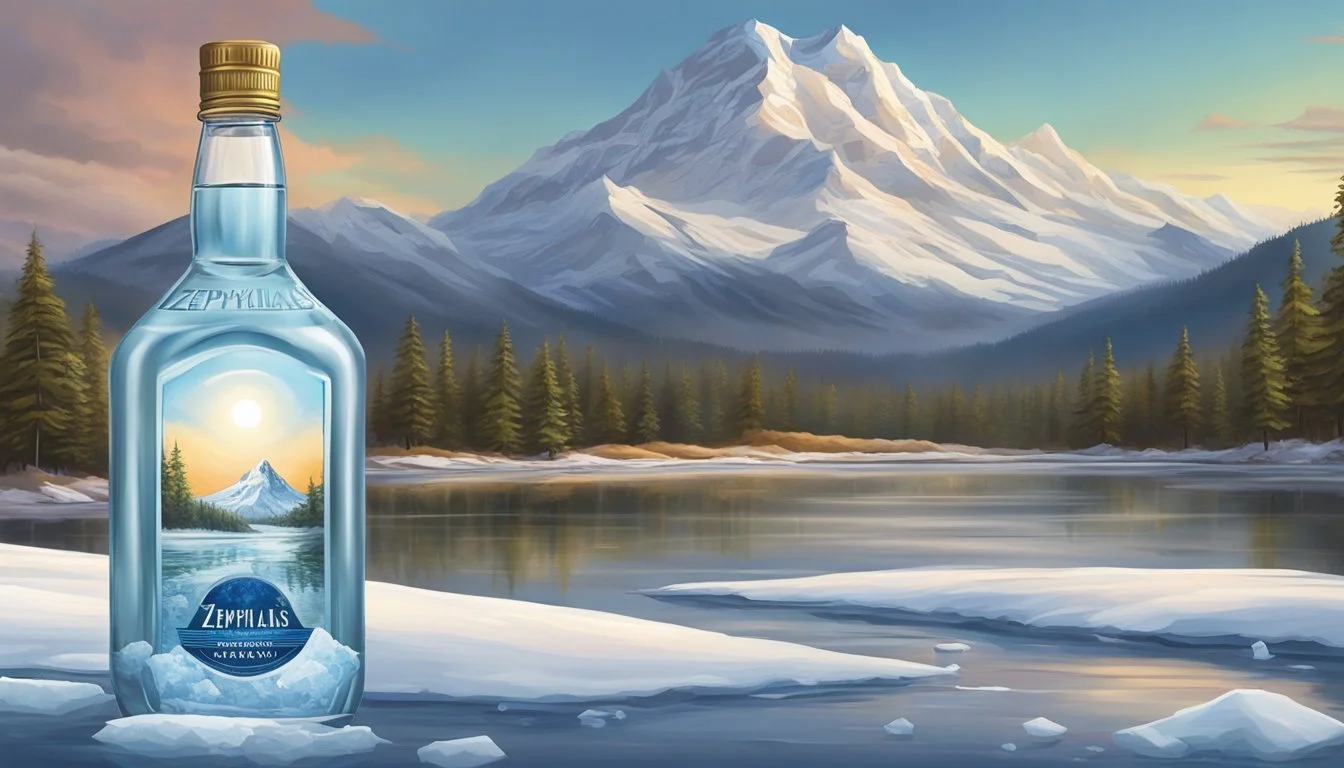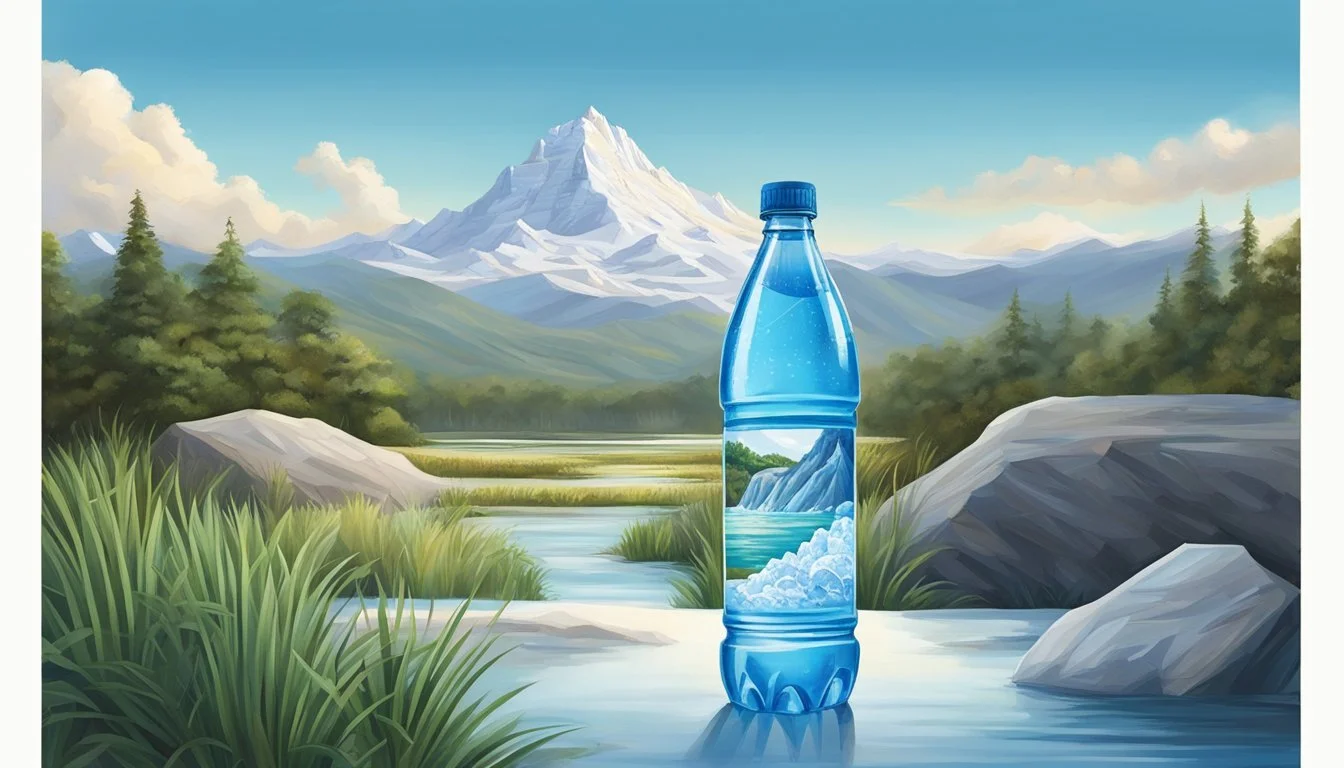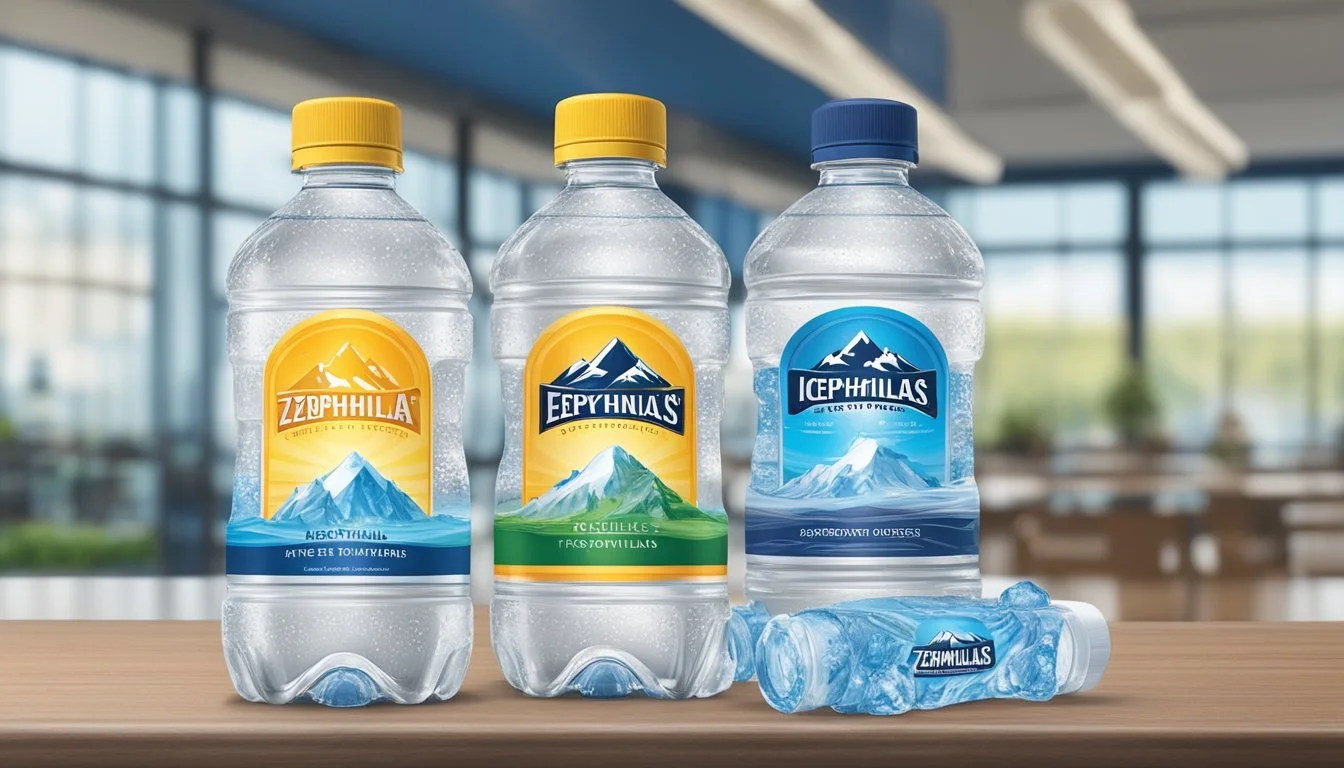Ice Mountain vs. Zephyrhills
Comprehensive Bottled Water Comparison
Bottled water is a staple in many households, providing a convenient and reliable source of hydration. Among the myriad of brands available, Ice Mountain and Zephyrhills have emerged as popular choices for consumers. Both brands boast a natural spring water source, with Ice Mountain sourcing its water from springs in the Midwest, particularly in Michigan, and Zephyrhills obtaining its water from Florida's natural springs.
The choice between Ice Mountain and Zephyrhills often comes down to regional availability and personal preference. Ice Mountain is known for its crisp taste, which it attributes to the 11-step quality process that the water undergoes before bottling. On the other hand, Zephyrhills is praised for its refreshing flavor, reflective of the Floridian aquifers from which it is drawn. Both brands have carved out a niche in their respective regions, with a reputation for providing clean and pure water to their customers.
When considering which bottled water is better, it is important to take into account factors such as taste, quality of the source, the purification process, and the presence of minerals that can enhance flavor. While Ice Mountain and Zephyrhills are both solid choices in the bottled water market, the ultimate decision may lie in the subtle differences that distinguish one brand from the other. Consumers are advised to consider these nuances alongside their own hydration needs and taste preferences when selecting a bottled water brand.
History and Brand Profiles
This section explores the origins of two prominent bottled water brands in the United States, Ice Mountain and Zephyrhills. Both brands source their products from natural spring water, with distinct backgrounds that reflect their regional heritages.
Ice Mountain Background
Ice Mountain is a brand owned by Nestlé Waters North America, which is one of the leading bottled water companies in the country. It takes its name from the fresh, crisp waters flowing in the heart of America's Midwest. Since its inception, Ice Mountain has been bottling natural spring water, sourced from springs located across several states in this region. The brand has established a reputation for providing water with a taste that reflects the purity of its sources.
Zephyrhills Origins
Zephyrhills is a brand steeped in Floridian heritage, with a history that dates back to 1964. The brand sources its natural spring water directly from Florida's abundant aquifers. Floridians have long trusted Zephyrhills for its local provenance and commitment to quality, making it a staple in homes throughout the state. Like Ice Mountain, Zephyrhills is owned by Nestlé Waters North America, and it continues to be synonymous with Florida's natural refreshment.
Water Sources and Process
When analyzing bottled water brands such as Ice Mountain and Zephyrhills, it is crucial to assess the origins of the water and the methods used for its purification and bottling.
Spring Water Source Analysis
Ice Mountain and Zephyrhills both source their water from natural springs. Ice Mountain's water is collected from several springs located in Michigan, where the water is naturally filtered through glacial deposits. These springs are carefully managed to assure the long-term sustainability of the groundwater.
Zephyrhills, on the other hand, sources its spring water from Florida, with the water traveling through the aquifer and collecting minerals. These naturally occurring minerals contribute to the taste and composition of the water.
Purification and Bottling Methods
Both brands employ multi-step purification processes, although specifics may vary.
Ice Mountain outlines an 11-step quality assurance process which may involve various stages, such as:
Carbon filtration
Microfiltration
Ultraviolet treatment
This process ensures the water meets stringent quality standards before it is bottled.
Zephyrhills is less forthcoming about their specific purification process, but bottled water standards typically involve several of these stages:
Filtration to remove particles
Reverse osmosis to clear out dissolved substances
Ozonation for disinfection
Neither Ice Mountain nor Zephyrhills indicate the use of reverse osmosis in the provided snippets, but such a method is often employed to produce purified water, which can sometimes be infused with electrolytes for taste. Unlike electrolyte-infused or alkaline water options on the market, Ice Mountain and Zephyrhills focus on delivering natural spring water with the natural mineral profile of their respective sources.
Taste and Quality Assessment
Discerning the preferred choice between Ice Mountain and Zephyrhills bottled water hinges on rigorous taste and quality assessments. Consumers' palates and established quality control measures offer insights into the superiority of these brands.
Consumer Taste Preferences
Consumer preferences for water taste are often subjective, but trends suggest that certain brands consistently satisfy the palate. Ice Mountain, sourced from multiple springs in the Midwest, is known for its crisp and refreshing taste profile that many consumers find appealing. Zephyrhills, drawing water from Florida's aquifers, also has a loyal following who praise its taste for being clean and pure. No definitive studies assert that one brand universally outshines the other, displaying the personal nature of drinking water preference.
Quality Control and Reports
All bottled water brands, including Ice Mountain and Zephyrhills, must adhere to stringent FDA regulations. These rules ensure the safety and quality of bottled drinking water. Both companies provide quality reports that are accessible to the public; these reports detail the water's source, the bottling process, and any contaminants that might be present.
Ice Mountain prints the source of its water on its label, allowing consumers to trace the water back to its origin. Their quality reports are thorough, ensuring that FDA standards are met or exceeded.
Zephyrhills offers its quality reports online, complete with detailed analyses that showcase compliance with safety regulations and standards for purity.
Consumers interested in the specifics can examine these reports to determine which brand aligns with their personal standard for water quality and safety. These quality reports, coupled with the water label, offer a transparent view into the contents and quality of the bottled water they are consuming.
Health Considerations
In evaluating Ice Mountain and Zephyrhills bottled waters, two aspects are crucial: their impact on health and the safety of their contents.
Comparative Health Impact
Both Ice Mountain and Zephyrhills provide an alternative to tap water and offer the convenience of portability, which can aid in maintaining proper hydration. Proper hydration is vital for various bodily functions and can affect the immune system and overall health. However, consumers should consider the presence of minerals in these waters, as well as their alkalinity or acidity, which can contribute different health benefits or drawbacks.
Contaminant Levels and Safety
Lead and Chlorine: Neither Ice Mountain nor Zephyrhills commonly report high levels of lead or chlorine, elements that potentially compromise health. The EPA sets stringent limits for these contaminants in drinking water to minimize health risks, including issues with the immune system and developmental problems in children.
Fluoride: Ice Mountain has been identified in search results to potentially include fluoride, which is omitted from some bottled water to cater to health-conscious consumers. While fluoride can help in the prevention of dental cavities, excessive ingestion could have negative health impacts. Zephyrhills' stance on fluoride levels isn't specified in the search results.
BPA and Plastic Particles: Bottles themselves are another consideration; both brands adhere to regulations to avoid BPA, a chemical that can affect health, particularly the endocrine system. Despite this, the potential for microscopic plastic particles in bottled water exists, but no definitive link to health consequences has been established.
PFAS Chemicals: Per- and polyfluoroalkyl substances (PFAS) are a collection of chemicals found in many industrial applications and consumer products that can leach into water supplies. Their presence in bottled water is a growing concern due to potential long-term health effects, such as an increased risk of cancer and impact on the immune system. The World Health Organization and EPA are involved in assessing risks and setting guidance for acceptable levels, though as of the knowledge cutoff in early 2023, specific regulations for these chemicals in bottled water may still be under development.
Both Ice Mountain and Zephyrhills strive to comply with the EPA standards and often conduct their internal testing to ensure the safety of the water they provide. Consumers are encouraged to check the most recent water quality reports from these brands for the latest information on contaminant levels.
Environmental Impact
Examining the environmental effects of bottled water brands is crucial for understanding their overall sustainability. The focus here is on two particular aspects: the production and disposal of plastic bottles and the management of the water sources used by the brands.
Plastic Bottle Pollution
The production of plastic bottles for brands like Ice Mountain and Zephyrhills contributes significantly to environmental concerns. These bottles often end up as plastic waste if not properly recycled. Ice Mountain and Zephyrhills use PET plastic for their bottles, which is generally considered BPA-free and recyclable. However, the recycling rate for PET bottles in the United States is not 100%, leading to considerable amounts of plastic waste.
GHG Emissions: Manufacturing plastic bottles generates greenhouse gases, which contribute to climate change.
Plastic Waste: Bottles can contribute to landfill waste and ocean pollution when not recycled.
Water Resource Management
Ice Mountain and Zephyrhills manage their water sources differently, which can have diverse impacts on the environment. Efficient water resource management is essential to reduce the depletion of groundwater and to minimize the impact on local ecosystems.
Groundwater: Over-extraction of groundwater can lead to a reduction in water levels, affecting nearby water bodies and ecosystems.
Municipal Water: Some bottled water, unlike Ice Mountain and Zephyrhills, originates from municipal sources and its bottling can raise questions about the allocation of public resources for private profit.
Both brands have stated commitments to sustainable water management, but the impact on local water resources can vary depending on a variety of factors, including location, volume of extraction, and local environmental regulations.
Consumer Choices and Preferences
When consumers choose between Ice Mountain and Zephyrhills, they consider factors such as packaging appeal and price, which influence their preference and accessibility to the products.
Packaging and Branding Appeal
Consumers often gravitate towards bottled water brands with aesthetically pleasing and convenient packaging. Ice Mountain offers its water in BPA-free plastic bottles. The brand's label, featuring a serene mountain landscape, resonates with those seeking the purity of natural spring water. In contrast, Zephyrhills, also presented in BPA-free containers, showcases the Floridian spring source, appealing to regional pride and those who prioritize local products.
Smartwater and VOSS, for example, have garnered attention with their sleek, transparent glass bottles, a favorite among environmentally conscious consumers shopping at stores like Whole Foods. These brands, however, stand at a higher price point, often featured in premium locations such as Starbucks.
Price Point and Accessibility
The price of bottled water and its availability deeply impact consumer choices. Ice Mountain is priced competitively, making it a common find in large supermarkets as well as smaller retail outlets. Zephyrhills, while similarly priced, might be more accessible in certain geographical locations, particularly in the southeastern United States.
Here's a brief comparison:
Price Average:
Ice Mountain: $1.00 - $2.50 (per bottle)
Zephyrhills: $1.00 - $2.50 (per bottle)
Coca-Cola’s products, such as Smartwater, typically carry a steeper price reflecting their premium branding, while Boxed Water emerges as an innovative yet affordable alternative in environmentally friendly packaging.
In summary, while both Ice Mountain and Zephyrhills are contenders in the bottled water market, the subtle differences in their packaging appeal and the slight regional variations in price and accessibility could sway consumer preferences.
Legal and Regulatory Framework
The safety and quality of bottled water such as Ice Mountain and Zephyrhills are regulated by a complex set of laws and standards. Both brands must adhere to strict compliance with FDA regulations, and they may also seek certifications from international bodies to ensure global quality recognition.
FDA Water Standards Compliance
The Food and Drug Administration (FDA) sets rigorous regulations to ensure the safety of bottled water in the United States. Ice Mountain and Zephyrhills both comply with FDA standards, which include limits on contaminants and mandates for regular testing. The FDA categorizes bottled water under the "food" umbrella and thus requires it to adhere to the Federal Food, Drug, and Cosmetic Act (FFDCA). These regulations are influenced by the Environmental Protection Agency's (EPA) National Primary Drinking Water Regulations under the Safe Drinking Water Act. While the EPA oversees tap water, the FDA ensures that the bottled water industry, including Ice Mountain and Zephyrhills, meets similar stringent safety standards.
Contaminant Monitoring: Regular testing for chemical, physical, microbiological, and radiological contaminants.
Labeling Requirements: Accurate information regarding the source and any treatment the water has undergone.
Good Manufacturing Practices (GMP): Bottling facilities must follow strict protocols to maintain sanitation and safety.
International Bottled Water Certifications
For quality assurance beyond U.S. borders, Ice Mountain and Zephyrhills may acquire certifications from international organizations. The International Bottled Water Association (IBWA) is one prominent body that offers certification programs, ensuring that member companies adhere to both FDA standards as well as additional global criteria established by the World Health Organization (WHO).
IBWA Certification: Compliance with the Bottled Water Code of Practice which includes more stringent guidelines compared to FDA regulations.
WHO Considerations: Ensuring that the water sold by companies like Ice Mountain and Zephyrhills is safe to drink in countries without their own regulatory frameworks.
Certifications and compliance with these regulatory bodies are indicators of the brands' commitment to providing safe and high-quality bottled water. Both companies may use materials such as bottles that are free from BPA (bisphenol A), a chemical that has raised health and safety concerns. Ensuring consistent adherence to these regulations and standards is critical for maintaining consumer confidence and upholding the bottled water industry's reputation for product safety.
Future Trends in Bottled Water
As the bottled water industry continues to evolve, two key areas stand out: technological advancements in water purification and changing consumer preferences. Innovations are shaping the quality and types of bottled water available, while consumers are influencing market offerings with their drinking habits.
Innovations in Water Purification
Reverse Osmosis (RO): This purification method is already popular for its ability to filter contaminants. Future developments in RO technology are expected to increase efficiency and reduce waste, making it a cornerstone technique for brands like smartwater.
Alkaline Water Systems: The demand for alkaline water is anticipated to rise due to its health appeal. Bottled water brands may implement sophisticated systems that enhance the water's pH level, integrating electrolytes for added benefits.
Shifts in Consumer Drinking Habits
Flavored Water Surge: An increased preference for variety is steering consumers away from plain water towards flavored options. Brands may introduce more natural, calorie-free flavors to satisfy this demand without compromising on health.
Environmental Concerns: Consumers are becoming more ecologically conscious. They are comparing the environmental impact of bottled water to tap water. Bottled water brands that can offer sustainable packaging and sourcing practices are likely to gain favor.
By staying abreast of these technology and preference trends, bottled water companies can position themselves effectively within the future market landscape.
Comparative Analysis
This section examines the specifics in the direct comparison between Ice Mountain and Zephyrhills bottled water brands, as well as situating them within the broader industry context amongst other competitors.
Ice Mountain vs. Zephyrhills Direct Comparison
Ice Mountain Natural Spring Water and Zephyrhills Natural Spring Water are well-known brands in the bottled water market. Ice Mountain sources its water from multiple springs in the Midwest, mainly in Michigan, while Zephyrhills' water is sourced from Florida's springs.
Taste: Consumers tend to describe Ice Mountain as having a clean, refreshingly neutral taste; Zephyrhills is often said to have a slightly sweet profile due to the natural minerals from the Floridian aquifers.
Processing: Both brands utilize similar processing techniques, including microfiltration and ozonation to ensure safety and quality.
Ice Mountain:
Source: Midwest springs
Taste: Neutral
Zephyrhills:
Source: Floridian springs
Taste: Slightly sweet
Industry Competitor Overview
When considering industry competitors like Poland Spring, Deer Park, Aquafina, Evian, and Dasani to more upscale choices like Fiji, Voss, and Essentia, flavor and source vary significantly, reflecting regional differences and branding strategies.
Source Differentiation: Fiji water, sourced from an artesian aquifer in Fiji, has a unique mineral profile, while Icelandic Glacial comes from Iceland's legendary springs, providing a different appeal to consumers.
Market Positioning: High-end brands like Voss and Essentia boast premium positioning due to factors like bottling methods and alkaline pH levels.
In the United States, brands like Poland Spring and Deer Park are synonymous with regional spring water, similar to Ice Mountain and Zephyrhills, and serve as direct competitors in their respective markets. However, brands like Aquafina and Dasani are differentiated as they offer purified municipal water rather than spring water.
As America's beverage preferences shift, companies like Nestlé, which owns Ice Mountain, are contending with a market that increasingly values sustainability and ethical sourcing, a space in which brands like Eternal Water and Ethos Water aim to excel. Specialty products such as Mountain Valley Spring Water maintain a niche following through heritage and distinct taste profiles, consistently ranking high in consumer taste tests.






